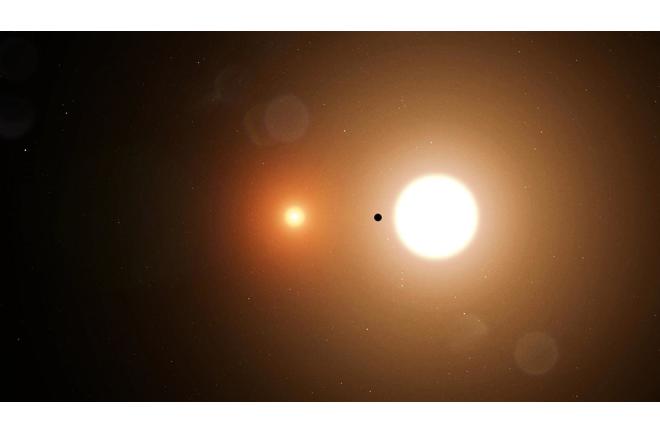
On Saturday, May 22, NASA scientists will walk amateur astronomers through how they can use their telescopes to get involved with real science.
Studying the entire night sky is no small task. Even with a host of telescopes and satellites, astronomers can’t watch every piece of the sky all the time. But scientists want to make sure they’re not missing anything exciting happening in space — that’s where amateur astronomers and citizen scientists come in.
Increasingly, NASA is encouraging amateur astronomers to get involved with citizen science projects that let people make important observations using their own telescopes. That data is in turn fed to professional astronomers who integrate it with their own observations to create even more comprehensive datasets on the night sky.
NASA scientists will present citizen science projects in need of data from amateur astronomers and show attendees how they can get involved at the upcoming CitSciCon, hosted by SciStarter and the Citizen Science Association.
CitSciCon is a first-of-its-kind online event series that invites everyone, everywhere to discover fun and important ways to help NASA do authentic research with citizen science projects. A dozen free online sessions on May 21 and May 22 provide recipes for volunteers to prepare for and participate in ongoing, featured NASA citizen science projects.
Amateur astronomy projects will take center stage during a session called Telescope Time on Saturday, May 22 from 5:45 p.m. to 7:00 p.m. ET. The event features four groups and projects that give amateur astronomers the chance to make a difference for science.
These projects require the use of telescopes and guide volunteers to help scientists study planets, stars, asteroids and more. In this session, moderated by Vivian White of NASA’s Night Sky Network, you’ll hear from scientists who need your help advancing important research through your eyes … or, rather, through the lens of your telescope!
You can find more free CitSciCon sessions and all the featured projects open to everyone at SciStarter.org/NASA.

Amateur Astronomers Finding Exoplanets
Astronomers often look for exoplanets by watching as these worlds pass in front of their host stars, an event called a transit. This short-lived event produces a momentary dip in starlight. Amateur astronomers involved with one NASA citizen science project called Exoplanet Watch use their own telescopes to search the night sky for these transits. Their telescope observations can help NASA confirm fundamental properties of these exoplanets, like their size and orbit. But amateur astronomers can even find potential exoplanets themselves.
Citizen scientists on the project will also process and upload their own data to the AAVSO’s Exoplanet Database hosted by the American Association of Variable Star Observers. That way, the results get shared with the professional exoplanet community so even more discoveries can be made.
Learn how you can be part of this process by contributing to NASA’s Exoplanet Watch, a citizen science initiative. During the Telescope Time session, NASA exoplanet scientist Rob Zellem will show participants how to turn observations with their telescopes into hard data for NASA science projects.
Observe Jupiter with DIY Radio Telescopes
It’s not just music that comes in through radio waves — you can hear the planets, too! Our Sun, Jupiter and other celestial bodies emit radio waves as a result of their magnetic fields. Scientists use radio telescopes to listen to these frequencies and learn about things in the night sky.
During CitSciCon, Chuck Higgins, an astronomer at Middle Tennessee State University who studies Jupiter, will introduce participants to Radio Jove, a citizen science project that lets amateur astronomers listen to Jupiter.
You can build your very own radio telescope and join more than 1,100 teams and individuals as they study our solar system. The Radio Jove project offers a radio telescope kit, as well as instructions on how to set it up. The project is great for astronomy enthusiasts, science classrooms and more.
Discover and Watch Asteroids
NASA has already sent spacecraft to multiple orbiting comets and asteroids, like the recent OSIRIS-REx mission to Bennu that will return samples in 2023. As the space agency looks to the future, they need to pick which of the millions of unique objects in the solar system they’ll plan trips to next. That’s where the Target NEOs project comes in.
You can help plan out the next asteroid for NASA and other space agencies to visit. The Target Asteroids/Target NEOs citizen science project is recruiting amateur astronomers to make observations of nearby asteroids and other objects.
The images and data will give scientists a better idea of where they should send the next spacecraft mission aimed at visiting objects orbiting nearby in our solar system. During the Telescope Time session at CitSciCon, NASA scientist Carl Hergenrother, a member of the OSIRIS-REx team, will introduce participants to the Target NEOs project.

Join the Night Sky Network
The Night Sky Network is a nationwide coalition of amateur astronomy clubs bringing the science, technology, and inspiration of NASA’s missions to the general public. The network gives citizen scientists and amateur astronomers access to telescopes to make observations of the night sky. The findings they make then get shared with the professional astronomy community, helping to expand our store of knowledge about the cosmos and moving science forward.
If you’re curious about the universe and looking for a way to get started with astronomy, the Night Sky Network offers easy access to the tools and skills you’ll need. Astronomy clubs involved with the network collectively put on hundreds of free events all around the country every year, giving anyone the opportunity to begin stargazing.
Vivian White of the Astronomical Society of the Pacific, and who helps run the Night Sky Network, will be on hand at the Telescope Time session to help answer questions and show us how to connect amateur stargazing to real science.
You can find more citizen science projects using our Project Finder tool.

